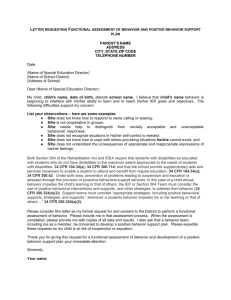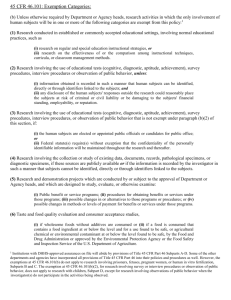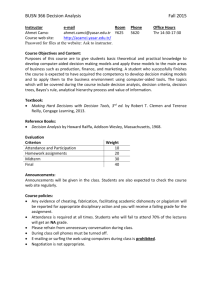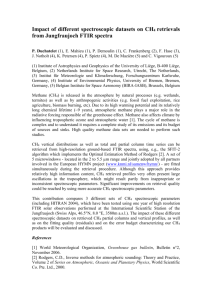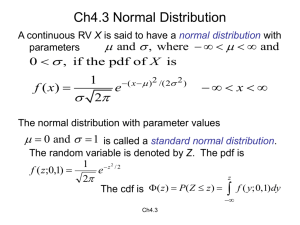Su, Z., Li, K.-F., Natraj, V., Shia, R.-L., Miller, C. E., and Yung, Y. L.
advertisement
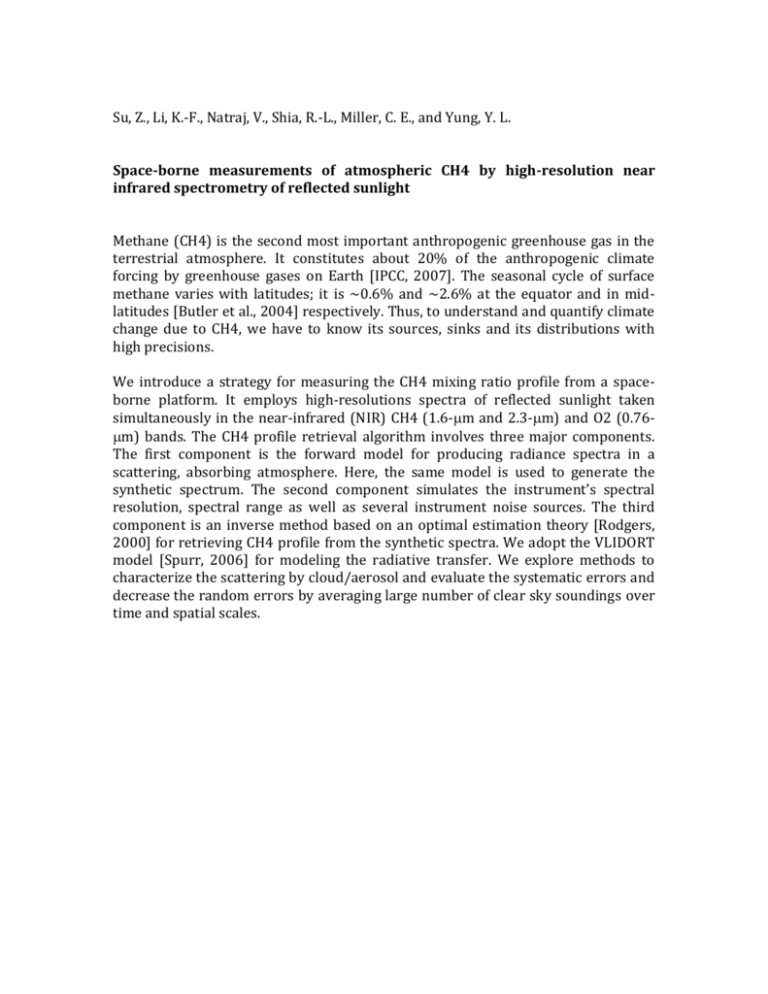
Su, Z., Li, K.-F., Natraj, V., Shia, R.-L., Miller, C. E., and Yung, Y. L. Space-borne measurements of atmospheric CH4 by high-resolution near infrared spectrometry of reflected sunlight Methane (CH4) is the second most important anthropogenic greenhouse gas in the terrestrial atmosphere. It constitutes about 20% of the anthropogenic climate forcing by greenhouse gases on Earth [IPCC, 2007]. The seasonal cycle of surface methane varies with latitudes; it is ~0.6% and ~2.6% at the equator and in midlatitudes [Butler et al., 2004] respectively. Thus, to understand and quantify climate change due to CH4, we have to know its sources, sinks and its distributions with high precisions. We introduce a strategy for measuring the CH4 mixing ratio profile from a spaceborne platform. It employs high-resolutions spectra of reflected sunlight taken simultaneously in the near-infrared (NIR) CH4 (1.6-m and 2.3-m) and O2 (0.76m) bands. The CH4 profile retrieval algorithm involves three major components. The first component is the forward model for producing radiance spectra in a scattering, absorbing atmosphere. Here, the same model is used to generate the synthetic spectrum. The second component simulates the instrument’s spectral resolution, spectral range as well as several instrument noise sources. The third component is an inverse method based on an optimal estimation theory [Rodgers, 2000] for retrieving CH4 profile from the synthetic spectra. We adopt the VLIDORT model [Spurr, 2006] for modeling the radiative transfer. We explore methods to characterize the scattering by cloud/aerosol and evaluate the systematic errors and decrease the random errors by averaging large number of clear sky soundings over time and spatial scales.





